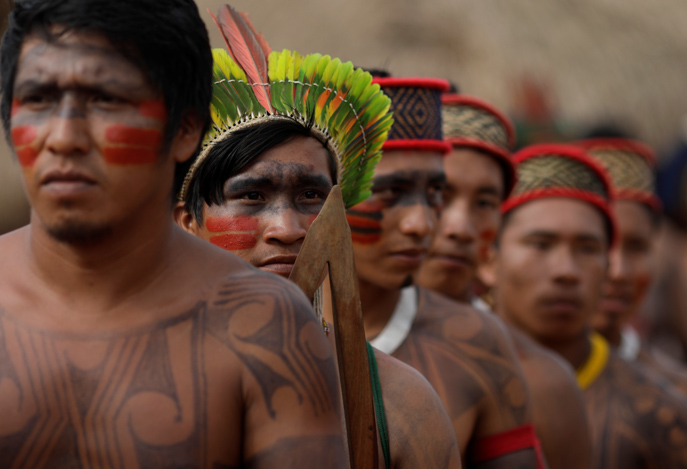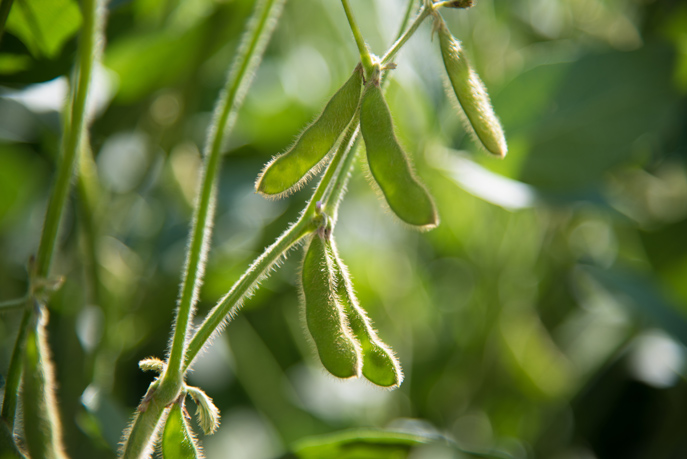The state of Mato Grosso’s pioneering Produce, Conserve, Include’ strategy is working to transform farmers into allies in the fight against deforestation, but it needs more financial support from outside Brazil, reports Mark Hillsdon
You could lose Texas – and a good chunk of California – within the borders of Mato Grosso. The vast Brazilian state, whose name means Great Woods, sprawls across more than 900,000km2, with 62% of the state still covered in native vegetation, part Amazon rainforest, part Cerrado savannah and part Pantanal wetland.
Yet the state is also the centre of the country’s agri-business sector, a global powerhouse of agricultural production that in 2018 produced 32m tons of soy and 5.4m head of cattle, a level of production that has put a huge strain on the landscape and, most critically, its forests.
In January, Brazil’s National Institute for Space Research (INPE) revealed that tree loss in the Amazon had increased by 85% this year, the slew of 2020 zero-deforestation commitments from foreign companies lost amid the smoke of forest fires and the arrival of a government with little time for environmentalism.
Mato Grosso has reduced deforestation more than any other state in the Brazilian Amazon in the past five years
Paradoxically, Mato Grosso, the largest producer of soy, maize and cotton in Brazil, has reduced deforestation more than any other state in the Brazilian Amazon in the past five years, largely due to its Produce, Conserve, Include (PCI) strategy, which aims to reduce deforestation within the Amazon by 90% and the Cerrado by 95%, reforest some 6.7m acres and, in the process, avoid some 6 gigatonnes of emissions by 2030.
But progress has been slow, with the percentage of unauthorised deforestation in the state reducing to 89.5% in 2018 from 96.4% in 2016.
Fernando Sampaio, the PCI’s executive director, says the strategy brings together government agencies, civil society and private businesses.

It is also part of a jurisdictional approach that encourages companies to collaborate with local governments, communities and producers across entire regions rather than simply one supply chain. It’s about long-term solutions and long-term benefits, with the aim of not just stopping deforestation but also increasing productivity and ensuring farmers have a say in the region’s economic development.
Importantly, it’s also a methodology that’s designed to complement rather than replace the efforts of private companies, integrating existing policies and building on prior successes to reduce deforestation.
What the PCI also recognises is that while deforestation needs to stop, it shouldn’t be local farmers that foot the bill. Under Brazil’s Forest Code, in force since 2012, only 20% of land in forested parts of the Amazon and 65% of land in the Cerrado can legally be converted for productive use by farmers.
Farmers feel that the Forest Code is already a heavy burden for them
“Zero-deforestation policies from companies in different supply chains have been creating a lot of conflict between farmers and industry,” explains Sampaio. “Farmers feel that the Forest Code is already a heavy burden for them. They provide a service that benefits the entire society but they [bear] all the costs. In private properties in the Amazon, up to 80% of the farms have to be preserved – something unthinkable in any other producing country. So farmers see zero deforestation … simply as confiscation of their properties and with no compensation.
He adds: “Many regions in Mato Grosso, and that is true for the rest of Brazil, see agricultural production as perhaps the only chance they will ever have of achieving some degree of development. If you look at municipalities and regions where soy production is strong, indicators for health, education, income, security are much better than the average in Brazil.”
There are some 50m hectares of degraded pasture within Mato Grosso, enough room to cope with expansion of Brazilian soy over the next 15 years. And with the right incentives, says André Guimarães, executive director at the Amazon Environmental Research Institute (IPAM), Mato Grosso’s farmers could double soy production without felling another tree or losing one hectare of grazing land.

Halving the use of land is also the aim of a €3.5m joint venture between the Sustainable Trade Initiative (IDH) and the Carrefour Foundation to increase the efficiency of cattle production in Mato Grosso. (See Mato Grosso’s plan to double beef production in bid to curb deforestation)
“There’s a price tag associated to it that needs to be paid by someone and at this point in time this price tag is being supported by Brazilian taxpayers’ money and a little bit of international cooperation,” Guimarães explains.
“If they [farmers] are willing to give up their right to deforest, and intensify production to produce more and conserve more at the same time, there should be some kind of premium.”
We feel that many companies want to support jurisdictional initiatives, but are not sure how to
Since 2017, Mato Grosso has also been the recipient of carbon financing through the REDD+ early movers programme to reward avoided deforestation. Funding of €17m from Germany and £23.9m from the UK through the programme is going to help smallholders, indigenous people and rural producers to protect forests.
But Sampaio said the funding represents less than 2% of what the state expects to earn through the nascent market for jurisdictional REDD+ projects compliant with the Paris Agreement, so it is exploring opportunities for funding through the private sector.
“The hardest part of the jurisdictional approach is how companies can engage,” he says. “We feel that many companies want to support jurisdictional initiatives, but are not sure how to do that. Our job is to offer that menu of possibilities on how to engage.”

The PCI has produced a “pitch book”, which lists projects across the state that are ripe for corporate support. They range from work in the soy-producing municipality of Querência, helping to promote forest restoration and strengthening technical assistance, to supporting the Xingu Seed Network, which is collecting seeds to help restore 6,000 hectares of degraded land across Mato Grosso. Other projects involve providing access to new markets for sustainable beef suppliers, and funding training so that more farmers can become certified through the Round Table on Responsible Soy (RTRS). (See Tendrils of hope amid escalating soy deforestation in Brazil)
A key element of PCI’s work in Querência is to work with farms that have been embargoed because of previous issues with deforestation, says Sampaio, and introduce new rules around compliance and allow them to re-enter the market. “You can’t build a positive future on sanctions alone,” says Sampaio.
While blacklisting a farm may tick the box for companies whose customers are demanding sustainable, deforestation-free products, he says, “you are not solving the problem, deforestation is still there… you are excluding a lot of people from the supply chain... [but] these people still need an income and they are going to find a way to make their living.”
What we want companies to understand is that Mato Grosso has a strategy, has a plan, has targets. We are making progress
Despite being by far the most important Brazilian state in terms of agri-business, and home to more than 100,000 smallholders, Mato Grosso is still a net importer of basic food stuffs such as fruit and beans, explains Guimarães.
The inclusive element of the PCI is setting out to change this, and there is an opportunity for companies to provide technical assistance and credit: “So this huge community of smallholders begins to be incorporated into the state economy,” he says.
It’s a strategy that dovetails with the fact that Mato Grosso is one of the only states in Brazil to have a state-level policy for family agriculture, developed by IPAM, that aims to bring smallholders into the economic fold.

Sampaio is also keen to create a new bio-economy that uses forest products such as brazil nuts in a way that can be developed without deforestation.
“What we want them [companies] to understand is that Mato Grosso has a strategy, has a plan, has targets,” he says. “We are making progress, so they understand that if they help us on this pathway, it is going to be good for their business in the future.”
And while Mato Grosso is still far from achieving its zero-deforestation aims, Sampaio says there will be much more progress this year.
We have reasons to be optimistic. At some point we are going to have Mato Grosso with no deforestation
Last August, with funding from the REDD+ Early Mover Programme, the state acquired Planet’s Satellite Image Monitoring Platform. The platform provides images from more than 120 satellites, available with three-metre spatial resolution and covering the entire territory of the state.
Crossing the information of deforestation from the satellites with the CAR (Rural Environmental Registry) also allows the state to make landowners accountable for deforestation.
“We have reasons to be optimistic about what is going on here,” says Sampaio. “At some point we are going to have Mato Grosso with no deforestation.”
Green bond to finance deforestation-free soy production

One innovative approach to incentivising sustainable soy production in the Cerrado is the Responsible Commodities Facility, a green bond that will begin trading on the London Stock Exchange later this summer.
While the current practice is to clear forests for soy cultivation, it’s estimated that in the Cerrado alone there are 18m hectares of degraded land that could be used instead, which is three times more than the sector will need to expand over the next decade.
By incentivising farmers to grow soy on degraded cattle pasture, the RCF will help to reduce carbon emissions and promote environmental laws such as Brazil’s Forest Code. Where this approach has stalled in the past is amid arguments about how it should be funded.
The RCF will offer crop financing and land restoration loans to farmers that combine lower interest rates and longer repayment terms.
It’s hoped the financing will reach over 600 medium-sized farms and amount to $3bn over the next 10 years. This, in turn, could facilitate the harvesting of over £20bn worth of soy and corn without deforestation of the Cerrado, with the potential to restore 1.2 million hectares of degraded land, helping to avoid and sequester up to 55 million tonnes of emissions.
Farmers will be vetted and screened before being eligible for funds. Importantly, they must also give up their right to legally deforest their land.
There will also be strict monitoring of production and the supply chain, and the commodities produced will be sold on international markets through a dedicated selling platform linked to a blockchain registry.
The fund will be run by the fund management company Sustainable Investment Management (SIM Finance). According to chief operating officer Mauricio Moura Costa, it will operate around blended finance, mixing finance from international agencies with private finance and impact investment.
Mark Hillsdon is a Manchester-based freelance writer who writes on business and sustainability for Ethical Corporation, The Guardian, and a range of nature-based titles including CountryFile and BBC Wildlife.
This article is part of our in-depth Deforestation briefing. See also:
Tendrils of hope amid huge setbacks for sustainable soy in Brazil
Mato Grosso’s plan to halve land use for cattle in bid to curb deforestation
‘Extreme poverty still fueling deforestation in Africa’
‘Investors and companies are fiddling while forests burn’
Is FSC worth the paper it’s printed on?
Standoff at Rainbow Ridge as northern California tree protestors take aim at FSC and Home Depot
Tackling deforestation key as UK looks to plough its own furrow post-Brexit

